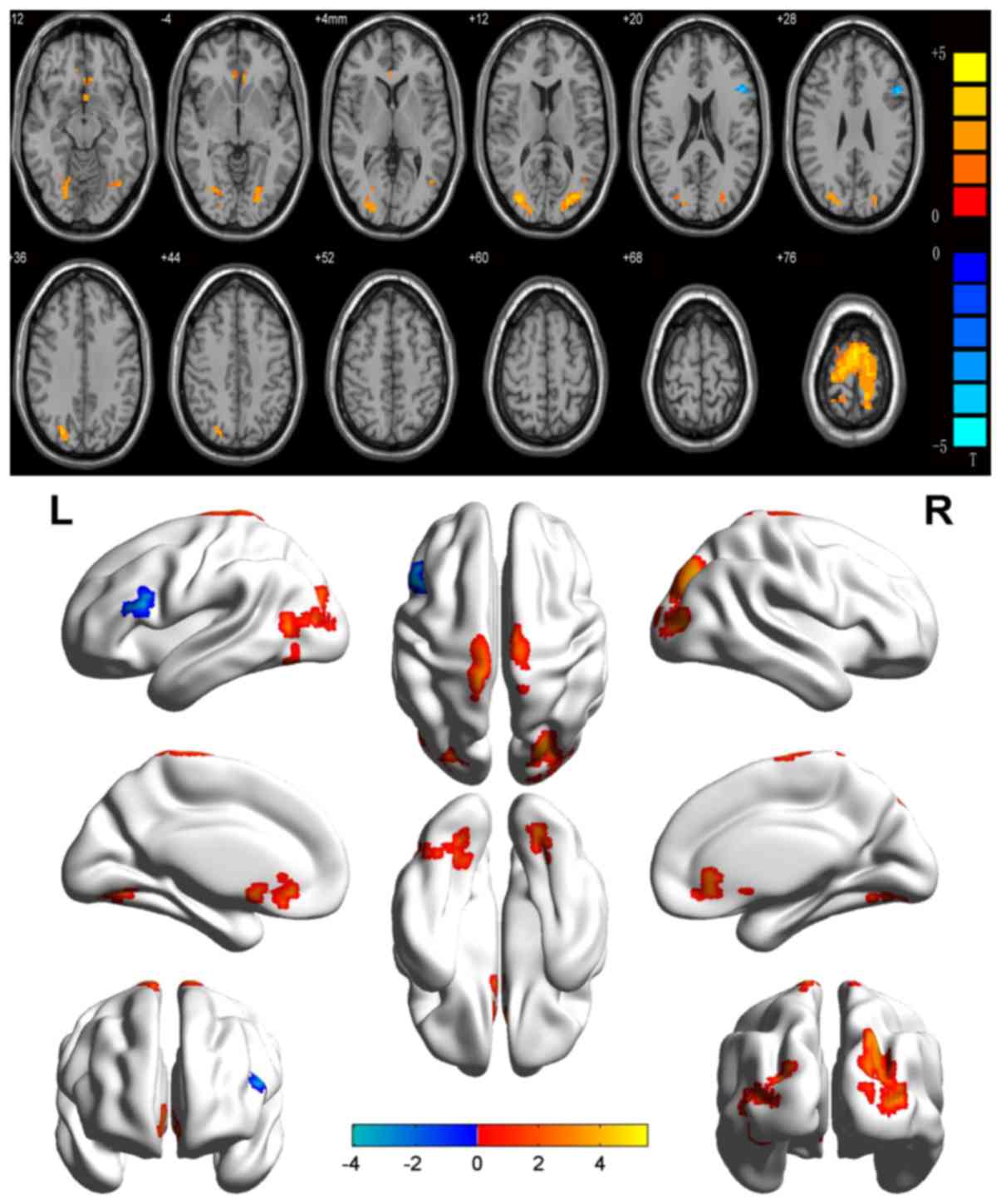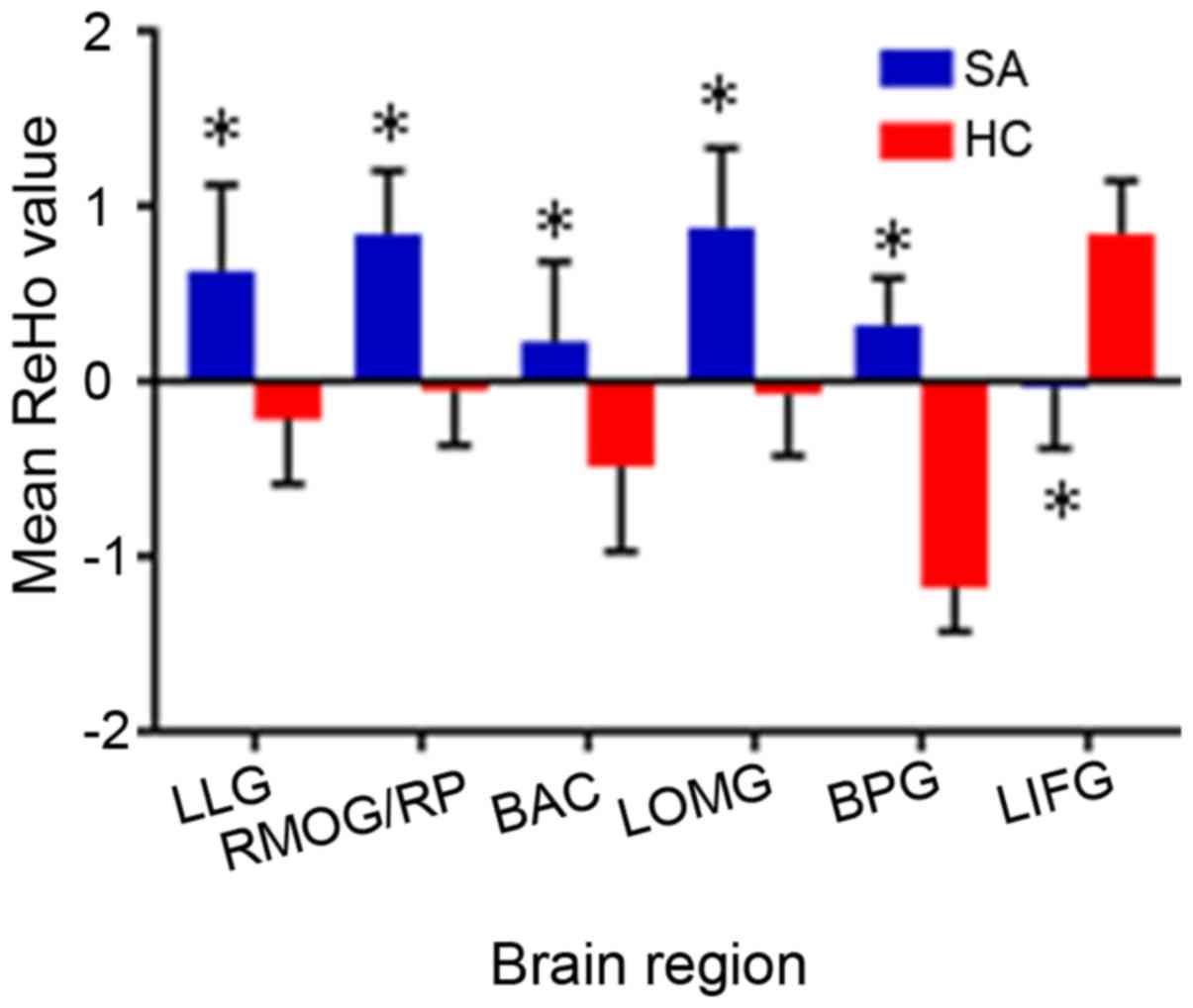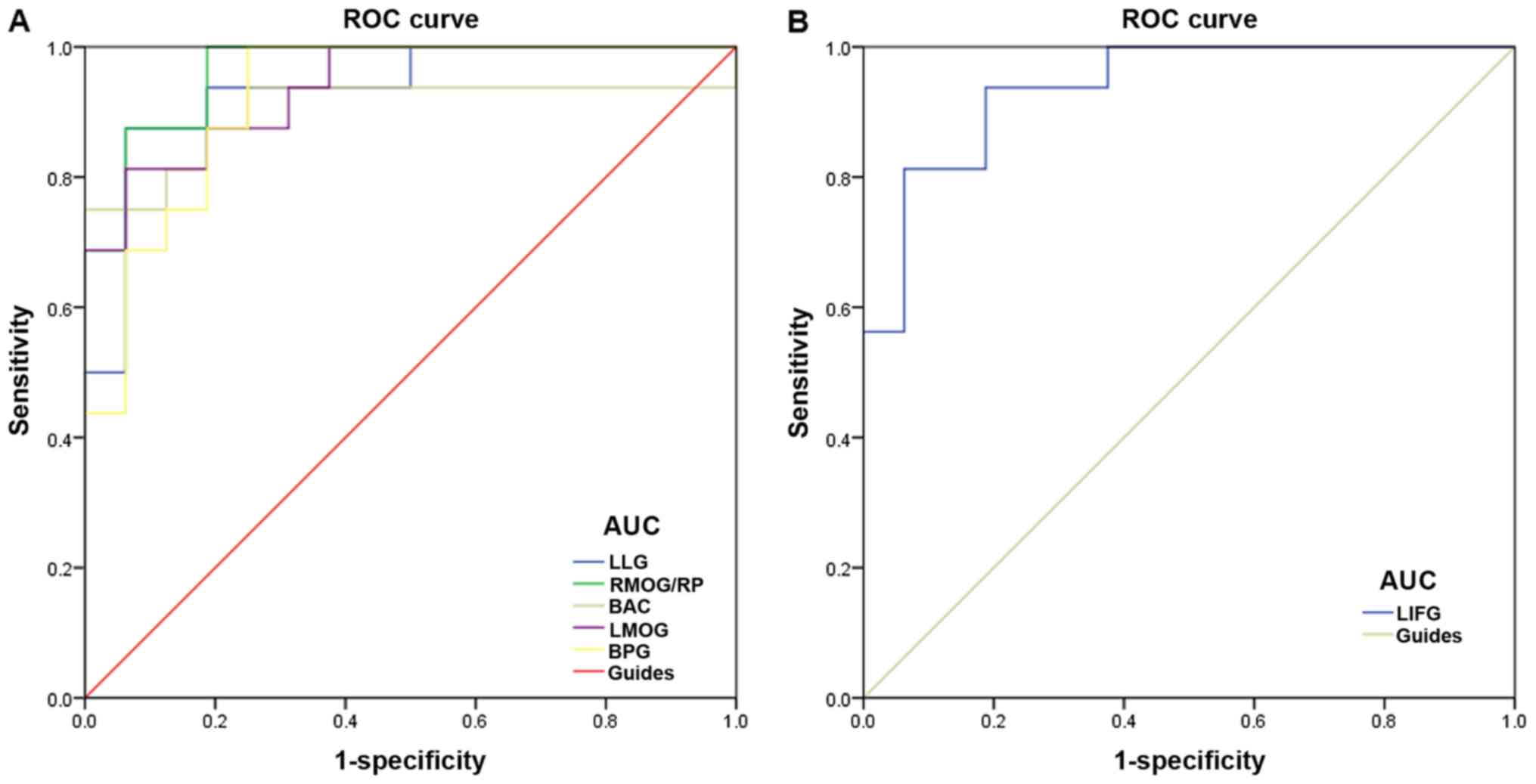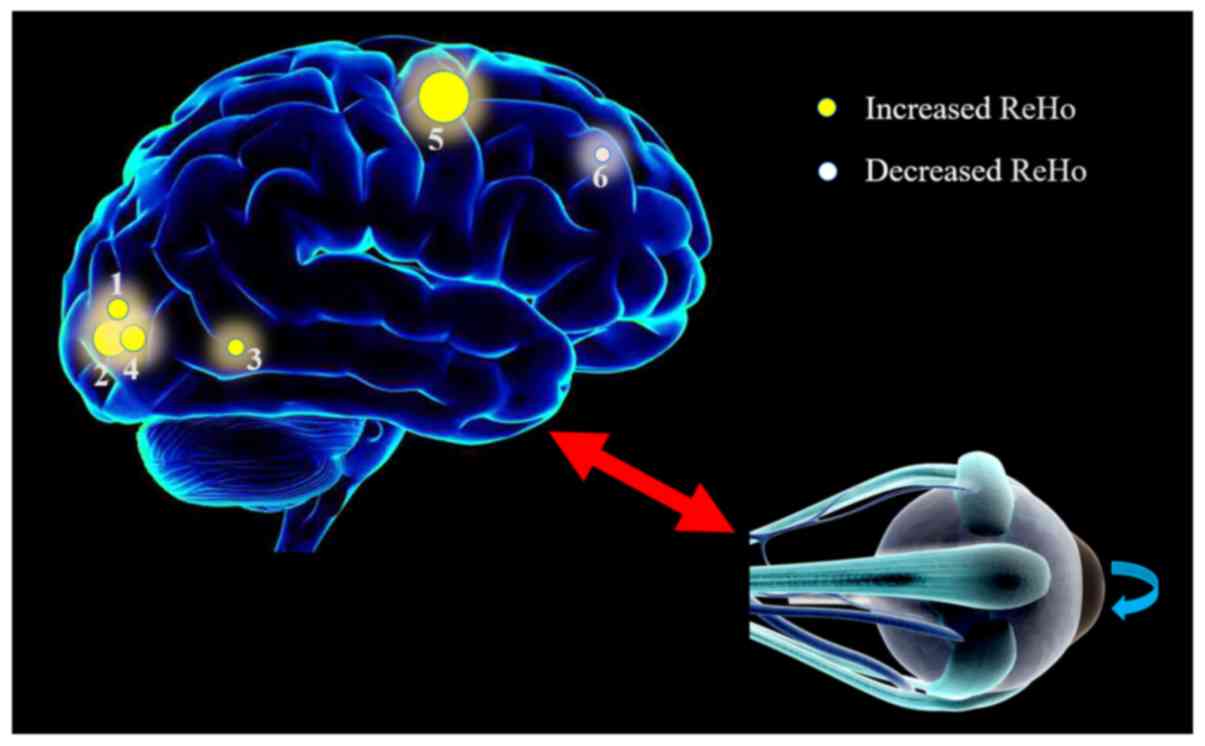|
1
|
Chen X, Fu Z, Yu J, Ding H, Bai J, Chen J,
Gong Y, Zhu H, Yu R and Liu H: Prevalence of amblyopia and
strabismus in Eastern China: results from screening of preschool
children aged 36–72 months. Br J Ophthalmol. 100:515–519. 2016.
View Article : Google Scholar : PubMed/NCBI
|
|
2
|
Lewandowski KB: Strabismus as a possible
sign of subclinical muscular dystrophy predisposing to
rhabdomyolysis and myoglobinuria: a study of an affected family.
Can Anaesth Soc J. 29:372–376. 1982. View Article : Google Scholar : PubMed/NCBI
|
|
3
|
Dickmann A, Petroni S, Salerni A, Parrilla
R, Savino G, Battendieri R, Perrotta V, Radini C and Balestrazzi E:
Effect of vertical transposition of the medial rectus muscle on
primary position alignment in infantile esotropia with A- or
V-pattern strabismus. J AAPOS. 15:14–16. 2011. View Article : Google Scholar : PubMed/NCBI
|
|
4
|
Clark RA: The role of extraocular muscle
pulleys in incomitant nonparalytic strabismus. Middle East Afr J
Ophthalmol. 22:279–285. 2015. View Article : Google Scholar : PubMed/NCBI
|
|
5
|
Oh SY, Clark RA, Velez F, Rosenbaum AL and
Demer JL: Incomitant strabismus associated with instability of
rectus pulleys. Invest Ophthalmol Vis Sci. 43:2169–2178.
2002.PubMed/NCBI
|
|
6
|
Kekunnaya R and Negalur M: Duane
retraction syndrome: causes, effects and management strategies.
Clin Ophthal (Auckland, NZ);. 11:19172017. View Article : Google Scholar
|
|
7
|
Breinin GM: In discussion of: De Gindersen
T, Zeavin B. Observations on the retraction syndrome of Duane. Arch
Ophthalmol. 55:5761956.
|
|
8
|
Parsa CF, Grant PE, Dillon WP Jr, du Lac S
and Hoyt WF: Absence of the abducens nerve in Duane syndrome
verified by magnetic resonance imaging. Am J Ophthalmol.
125:399–401. 1998. View Article : Google Scholar : PubMed/NCBI
|
|
9
|
Lueder GT, Dunbar JA, Soltau JB, Lee BC
and McDermott M: Vertical strabismus resulting from an anomalous
extraocular muscle. J AAPOS. 2:126–128. 1998. View Article : Google Scholar : PubMed/NCBI
|
|
10
|
Zhao K and Shi X: Learn new version of
Preferred Practice Pattern to further standardize the diagnosis and
treatment of amblyopia. Zhonghua Yan Ke Za Zhi. 50:481–484.
2014.(In Chinese). PubMed/NCBI
|
|
11
|
Jin H, Yi JL, Xie H, Xiao F, Wang WJ, Shu
XM, Xu YL, Chen SL and Ye WX: A study on visual development among
preschool children. Zhonghua yan ke za Zhi. 47:1102–1106.
2011.PubMed/NCBI
|
|
12
|
Avram E and Stănilă A: Functional
amblyopia. Oftalmologia. 57:3–8. 2013.(In Romanian). PubMed/NCBI
|
|
13
|
von Noorden GK: Abnormal Binocular
Interaction: Evidence in Humans. Strabismus and Amblyopia.
Lennerstrand G, von Noorden GK and Campos EC: Wenner-Gren Center
International Symposium Series, Palgrave Macmillan; London: pp.
275–284. 1988, View Article : Google Scholar
|
|
14
|
Sjöstrand JB: Form deprivation amblyopia-a
treatable cause of blindness. Acta Ophthalmol. 86:s2432010.
|
|
15
|
Wang H, Crewther SG, Liang M, Laycock R,
Yu T, Alexander B, Crewther DP, Wang J and Yin Z: Impaired
activation of visual attention network for motion salience is
accompanied by reduced functional connectivity between frontal eye
fields and visual cortex in Strabismic Amblyopia. Front Hum
Neurosci. 11:1952017. View Article : Google Scholar : PubMed/NCBI
|
|
16
|
Turner R: Functional Magnetic Resonance
Imaging (fMRI). Runehov A.L.C..Oviedo L: Encyclopedia of Sciences
and Religions. 2013. pp. 352013
|
|
17
|
Chan ST, Tang KW, Lam KC, Chan LK, Mendola
JD and Kwong KK: Neuroanatomy of adult strabismus: A voxel-based
morphometric analysis of magnetic resonance structural scans.
Neuroimage. 22:986–994. 2004. View Article : Google Scholar : PubMed/NCBI
|
|
18
|
Bi H, Zhang B, Tao X, Harwerth RS, Smith
EL III and Chino YM: Neuronal responses in visual area V2 (V2) of
macaque monkeys with strabismic amblyopia. Cereb Cortex.
21:2033–2045. 2011. View Article : Google Scholar : PubMed/NCBI
|
|
19
|
Huang X, Li SH, Zhou FQ, Zhang Y, Zhong
YL, Cai FQ, Shao Y and Zeng XJ: Altered intrinsic regional brain
spontaneous activity in patients with comitant strabismus: a
resting-state functional MRI study. Neuropsychiatr Dis Treat.
12:1303–1308. 2016. View Article : Google Scholar : PubMed/NCBI
|
|
20
|
Zang Y, Jiang T, Lu Y, He Y and Tian L:
Regional homogeneity approach to fMRI data analysis. Neuroimage.
22:394–400. 2004. View Article : Google Scholar : PubMed/NCBI
|
|
21
|
Tononi G, McIntosh AR, Russell DP and
Edelman GM: Functional clustering: Identifying strongly interactive
brain regions in neuroimaging data. Neuroimage. 7:133–149. 1998.
View Article : Google Scholar : PubMed/NCBI
|
|
22
|
Shao Y, Cai FQ, Zhong YL, Huang X, Zhang
Y, Hu PH, Pei CG, Zhou FQ and Zeng XJ: Altered intrinsic regional
spontaneous brain activity in patients with optic neuritis: a
resting-state functional magnetic resonance imaging study.
Neuropsychiatr Dis Treat. 11:3065–3073. 2015. View Article : Google Scholar : PubMed/NCBI
|
|
23
|
Cui Y, Jiao Y, Chen YC, Wang K, Gao B, Wen
S, Ju S and Teng GJ: Altered spontaneous brain activity in type 2
diabetes: a resting-state functional MRI study. Diabetes.
63:749–760. 2014. View Article : Google Scholar : PubMed/NCBI
|
|
24
|
Song Y, Mu K, Wang J, Lin F, Chen Z, Yan
X, Hao Y, Zhu W and Zhang H: Altered spontaneous brain activity in
primary open angle glaucoma: a resting-state functional magnetic
resonance imaging study. PLoS One. 9:e894932014. View Article : Google Scholar : PubMed/NCBI
|
|
25
|
Huang X, Li HJ, Ye L, Zhang Y, Wei R,
Zhong YL, Peng DC and Shao Y: Altered regional homogeneity in
patients with unilateral acute open-globe injury: a resting-state
functional MRI study. Neuropsychiatr Dis Treat. 12:1901–1906. 2016.
View Article : Google Scholar : PubMed/NCBI
|
|
26
|
Huang X, Ye CL, Zhong YL, Ye L, Yang QC,
Li HJ, Jiang N, Peng DC and Shao Y: Altered regional homogeneity in
patients with late monocular blindness: a resting-state functional
MRI study. Neuroreport. 28:1085–1091. 2017. View Article : Google Scholar : PubMed/NCBI
|
|
27
|
Huang X, Li D, Li HJ, Zhong YL, Freeberg
S, Bao J, Zeng XJ and Shao Y: Abnormal regional spontaneous neural
activity in visual pathway in retinal detachment patients: a
resting-state functional MRI study. Neuropsychiatr Dis Treat.
13:2849–2854. 2017. View Article : Google Scholar : PubMed/NCBI
|
|
28
|
Dai XJ, Gong HH, Wang YX, Zhou FQ, Min YJ,
Zhao F, Wang SY, Liu BX and Xiao XZ: Gender differences in brain
regional homogeneity of healthy subjects after normal sleep and
after sleep deprivation: a resting-state fMRI study. Sleep Med.
13:720–727. 2012. View Article : Google Scholar : PubMed/NCBI
|
|
29
|
Li Y, Liang P, Jia X and Li K: Abnormal
regional homogeneity in Parkinson's disease: a resting state fMRI
study. Clin Radiol. 71:e28–e34. 2016. View Article : Google Scholar : PubMed/NCBI
|
|
30
|
Holmes D, Rettmann M and Robb R:
Visualization in Image-Guided Interventions. Image-Guided
Interventions. Peters T and Cleary K: Springer; Boston, MA: 2008,
View Article : Google Scholar
|
|
31
|
Harrison BJ and Pantelis C: Gradient-Echo
Images. Encyclopedia of Psychopharmacology. Stolerman IP: Springer;
Berlin, Heidelberg: 2010
|
|
32
|
Lee HW, Hong SB, Seo DW, Tae WS and Hong
SC: Mapping of functional organization in human visual cortex:
electrical cortical stimulation. Neurology. 54:849–854. 2000.
View Article : Google Scholar : PubMed/NCBI
|
|
33
|
Liang M, Xie B, Yang H, Yin X, Wang H, Yu
L, He S and Wang J: Altered interhemispheric functional
connectivity in patients with anisometropic and strabismic
amblyopia: a resting-state fMRI study. Neuroradiology. 59:517–524.
2017. View Article : Google Scholar : PubMed/NCBI
|
|
34
|
Qi S, Mu YF, Cui LB, Li R, Shi M, Liu Y,
Xu JQ, Zhang J, Yang J and Yin H: Association of optic radiation
integrity with cortical thickness in children with Anisometropic
Amblyopia. Neurosci Bull. 32:51–60. 2016. View Article : Google Scholar : PubMed/NCBI
|
|
35
|
Yang X, Zhang J, Lang L, Gong Q and Liu L:
Assessment of cortical dysfunction in infantile esotropia using
fMRI. Eur J Ophthalmol. 24:409–416. 2014. View Article : Google Scholar : PubMed/NCBI
|
|
36
|
Schraa-Tam CK, van der Lugt A, Smits M,
Frens MA, van Broekhoven PC and van der Geest JN: Differences
between smooth pursuit and optokinetic eye movements using limited
lifetime dot stimulation: a functional magnetic resonance imaging
study. Clin Physiol Funct Imaging. 29:245–254. 2009. View Article : Google Scholar : PubMed/NCBI
|
|
37
|
Uddin LQ: Salience processing and insular
cortical function and dysfunction. Nat Rev Neurosci. 16:55–61.
2015. View Article : Google Scholar : PubMed/NCBI
|
|
38
|
Weissman-Fogel I, Moayedi M, Taylor KS,
Pope G and Davis KD: Cognitive and default-mode resting state
networks: Do male and female brains “rest” differently? Hum Brain
Mapp. 31:1713–1726. 2010.PubMed/NCBI
|
|
39
|
Liang M, Xie B, Yang H, Yu L, Yin X, Wei L
and Wang J: Distinct patterns of spontaneous brain activity between
children and adults with anisometropic amblyopia: a resting-state
fMRI study. Graefes Arch Clin Exp Ophthalmol. 254:569–576. 2016.
View Article : Google Scholar : PubMed/NCBI
|
|
40
|
Huang X, Li H-J, Zhang Y, Peng DC, Hu PH,
Zhong YL, Zhou FQ and Shao Y: Microstructural changes of the whole
brain in patients with comitant strabismus: evidence from a
diffusion tensor imaging study. Neuropsychiatr Dis Treat.
12:2007–2014. 2016. View Article : Google Scholar : PubMed/NCBI
|
|
41
|
Wandell BA, Dumoulin SO and Brewer AA:
Visual field maps in human cortex. Neuron. 56:366–383. 2007.
View Article : Google Scholar : PubMed/NCBI
|
|
42
|
Yan X, Lin X, Wang Q, Zhang Y, Chen Y,
Song S and Jiang T: Doral visual pathway changes in patients with
comitant extropia. PLoS ONE 5 (6). e109312010. View Article : Google Scholar
|
|
43
|
Jia CH, Lu GM, Zhang ZQ, Wang Z, Huang W,
Ma F, Yin J, Huang ZP and Shao Q: Comparison of deficits in visual
cortex between anisometropic and strabismic amblyopia by fMRI
retinotopic mapping. Zhonghua Yi Xue Za Zhi. 90:1446–1452. 2010.(In
Chinese). PubMed/NCBI
|
|
44
|
San Pedro EC, Mountz JM, Ojha B, Khan AA,
Liu HG and Kuzniecky RI: Anterior cingulate gyrus epilepsy: the
role of ictal rCBF SPECT in seizure localization. Epilepsia.
41:594–600. 2000. View Article : Google Scholar : PubMed/NCBI
|
|
45
|
Devinsky O, Morrell M and Vogt BA:
Contribution of anterior cingulate cortex to behavior. Brain 118
(Pt 1). 279–306. 1995.
|
|
46
|
Braga AMDS, Fujisao EK, Verdade RC,
Paschoalato RP, Paschoalato RP, Yamashita S and Betting LE:
Investigation of the cingulate cortex in idiopathic generalized
epilepsy. Epilepsia. 56:1803–1811. 2015. View Article : Google Scholar : PubMed/NCBI
|
|
47
|
Alkawadri R, So NK, Van Ness PC and
Alexopoulos AV: Cingulate epilepsy: report of 3 electroclinical
subtypes with surgical outcomes. JAMA Neurol. 70:995–1002. 2013.
View Article : Google Scholar : PubMed/NCBI
|
|
48
|
Unnwongse K, Wehner T and
Foldvary-Schaefer N: Mesial frontal lobe epilepsy. J Clin
Neurophysiol. 29:371–378. 2012. View Article : Google Scholar : PubMed/NCBI
|
|
49
|
Zhai J, Chen M, Liu L, Zhao X, Zhang H,
Luo X and Gao J: Perceptual learning treatment in patients with
anisometropic amblyopia: a neuroimaging study. Br J Ophthalmol.
97:1420–1424. 2013. View Article : Google Scholar : PubMed/NCBI
|
|
50
|
Xiao JX, Xie S, Ye JT, Liu HH, Gan XL,
Gong GL and Jiang XX: Detection of abnormal visual cortex in
children with amblyopia by voxel-based morphometry. Am J
Ophthalmol. 143:489–493. 2007. View Article : Google Scholar : PubMed/NCBI
|
|
51
|
Ouyang J, Yang L, Huang X, Zhong YL, Hu
PH, Zhang Y, Pei CG and Shao Y: The atrophy of white and gray
matter volume in patients with comitant strabismus: evidence from a
voxel-based morphometry study. Mol Med Rep. 16:3276–3282. 2017.
View Article : Google Scholar : PubMed/NCBI
|













